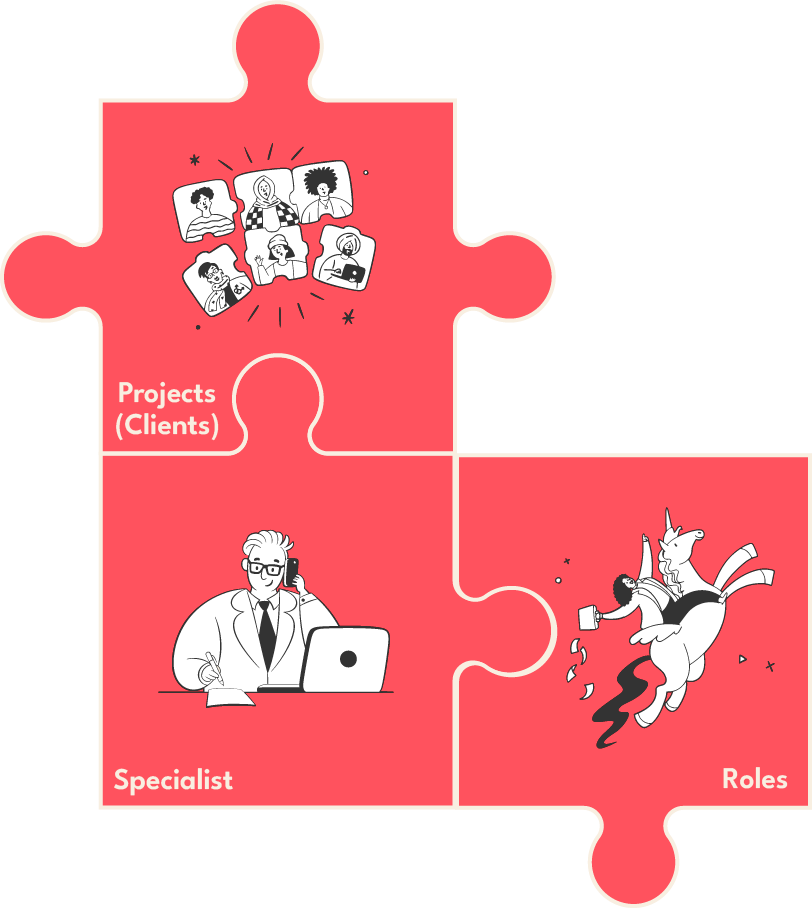Our Unique Approach
Traditional business structures often resemble a pyramid, with a single authority figure at the top saying what needs to be done and when. However, at .mta, we made a bold decision to stray away from this conventional model. Our organization thrives on a flat management approach. This doesn’t imply a lack of standard management responsibilities; instead, it means that we take on these responsibilities collectively.
Here, the absence of a “big boss” signifies that every team member enjoys the freedom to make decisions, driven by their own initiative and a profound sense of responsibility. Such a structure fosters creativity and innovation, giving every individual a chance to pitch in their ideas, be it refining our HR processes or brainstorming our next big marketing move. So, if someone noticed any issue could be enhanced, they just did it. That’s how Roles were born.

The Evolution of Roles
At the inception of our operations, our members assumed various roles, sharing responsibilities in finance, sales, legal matters, and marketing. Monetary compensation? None. But the reward for shaping and nurturing the organization was deeply satisfying.
However, as MTA continued to grow, it became clear that relying solely on goodwill and voluntary efforts wouldn’t sustain our expansion. It was crucial to assign a budget to Roles and designate visionary leaders responsible for steering the development of specific areas. Hence, the Role System was introduced, becoming one of our cornerstones.
How does the Role System operate?
Imagine Roles as individual mini-departments working in tandem towards the collective growth of .mta. While Roles like finance and HR remain constant, others adapt as new needs arise. Individuals in these Roles bear the responsibility for executing tasks promptly, adhering to budgets, and devising forward-thinking strategies.
We allocate a substantial 20% of our monthly revenue to strengthen this system. At the start of each month, we prioritize focus areas, allocate the necessary budgets, and identify roles that can temporarily be frozen. Instead of maintaining departments without genuine needs, our flexibility enables us to pivot and nurture areas that require attention.
With time, internal Roles like legal, finance, leadership, HR, technical expertise, and marketing strategy have become integral. Our present-day structure might seem more complex than it was in 2015, but rest assured, it’s far from siloed. Here at .mta wearing multiple hats isn’t just encouraged; it’s the everyday practice. It’s not unusual to see our CFO dabbling in a Meta Ads campaign or an HR specialist developing an internal marketing project. This cross-functional approach, where skills seamlessly spill over from one area to another, is one of our standout traits.

The outcome?
Well-tended areas, overseen by individuals driven to foster the growth of both the organization and themselves. This approach cultivates entrepreneurship, transforming our experts into seasoned financial directors, team leaders, or individuals eager to excel in branding and marketing. In fact, even the existence of this article itself is possible thanks to our robust Role System.
Where Do We Stand Now?
Our journey with the Role System is far from stagnant. We’ve continuously refined our approach through comprehensive feedback loops, innovative resource allocation, and a customized Objective and Key Result (OKR) framework for each Role. Currently, we are operating with version 4.1 of our Role System, categorizing Roles into two main types:
- Permanent Roles: These Roles form the bedrock of .mta, focusing on essential yet repetitive tasks performed consistently.
- Developmental Roles: These Roles lead the charge into uncharted territories, ensuring .mta remains at the forefront of innovation.
What’s next?
Predicting our next organizational evolution isn’t a straightforward task. It could be a minor adjustment ushering in version 4.2, or a significant leap toward 5.0. Regardless of the direction we take, one thing will remain constant: if someone wants to improve something, they have the freedom to make it happen.






